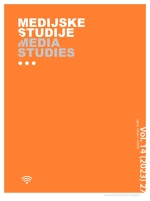DID THEY LIVE HAPPILY EVER AFTER? A REPRESENTATION OF ROMANTIC MYTHS IN THE FIRST TWO DECADES OF THE 21ST-CENTURY EUROPEAN FILM INDUSTRY
DID THEY LIVE HAPPILY EVER AFTER? A REPRESENTATION OF ROMANTIC MYTHS IN THE FIRST TWO DECADES OF THE 21ST-CENTURY EUROPEAN FILM INDUSTRY
Author(s): Irena Sever Globan, Paula Marija StierSubject(s): Media studies, Sociology of Culture, Film / Cinema / Cinematography, Sociology of Art
Published by: Fakultet političkih znanosti u Zagrebu
Keywords: romantic myth; European film; love; sexuality;
Summary/Abstract: Analyzing the representation of romantic myths in film can give us insight into the cultural understanding of desirable behaviors related to the areas of marriage, love, romance and sexuality. Whilst a number of authors have already warned about the effects these myths, which idealize the image of love, can have on the public, most research is based on samples which are heavily focused on Hollywoodproduced films. However, it is important to include filmography from various parts of the globe in the analysis of romantic myths. Based on a sample of 13 films produced in Europe from 2001 to 2020, which are listed among the ”100 Best Fresh Romance Movies“ on the webpage Rotten Tomatoes, alongside acclaimed romantic Croatian films, a content analysis revealed that the sample depicted narratives which tended to award verbal expressions of romantic myths. On the other hand, verbal expressions voicing problems and challenges, although more common, were usually punished. Unlike Hollywood-produced films, the overarching themes of European films were more focused on challenges than on romantic myths
Journal: Medijske studije
- Issue Year: 14/2023
- Issue No: 27
- Page Range: 126-145
- Page Count: 20
- Language: English

